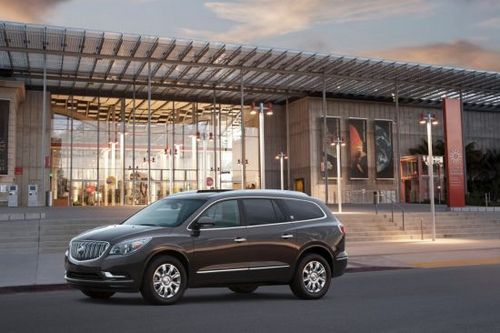Curbing Motion Sickness in the Buick Enclave
 2014 Buick Enclave |
DETROIT--April 25, 2014: You probably won’t recall the number of the road trips when one of your passengers didn’t get car sick while watching the rear DVD entertainment system, like the one in the Buick Enclave. Some credit for that goes to General Motors’ Human Factors group for properly placing the screen outside “the puke zone.”
As part of an effort to continually improve the way customers interact with vehicles, the Human Factors group conducts about 100 studies globally each year, including some with younger subjects who come to check out Mom and Dad’s workplace.
“Working with children on Take Your Child to Work Day is an excellent way for us to expand our pool of feedback,” said Don Shreves, GM Human Factors engineering group manager.
Take Your Child to Work Day gives Shreves’ team an opportunity to evaluate how children of varying ages and sizes intermingle with vehicles, allowing better tailoring of Buick products for the entire family.
“Our group and research is very data-driven,” he said. “Designing every element to a vehicle comes down to millimeters. While a door handle placement or seat switch might feel right to the designing engineer, we come in with data points from real consumer feedback, including kids, to help determine the best location.”
This year during Take Your Child to Work Day, the Usability team within the Human Factors group conducted a study looking at the Enclave’s third-row safety belt buckles. Testing buckles that have various angles and stiffness, kids were asked to use smiley faces to compare and rate the ease of fastening the safety belt based on a five-point scale.
Previous Take Your Child to Work Day studies, included “the puke zone,” a measurement to determine ideal placement of the DVD screen to reduce motion sickness and enhance viewing.
“We know through other scientific research that even if our eyes are focused on a fixed point – if we can see the outside passing by in the window – our brain is telling us that we are moving,” Shreves said. “But if our eyes are at a downward angle and do not see the view outside the vehicle, our bodies become sensitive to motion and increase the chance of sickness.”
The team’s goal was to keep passenger’s eyes up and in a given spot. Determining that precise location required setting up a DVD screen on a track that could slide fore and aft along the roof of an Enclave. Researchers recorded the responses of more than 75 kids who were asked when the screen distance was too close and too far away.
From there, the data was graphed and compiled to determine the best location. Results were turned over to the vehicle engineering team to integrate into the Enclave’s design.


